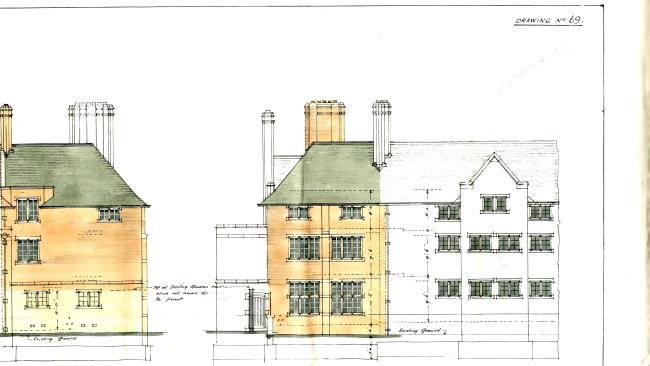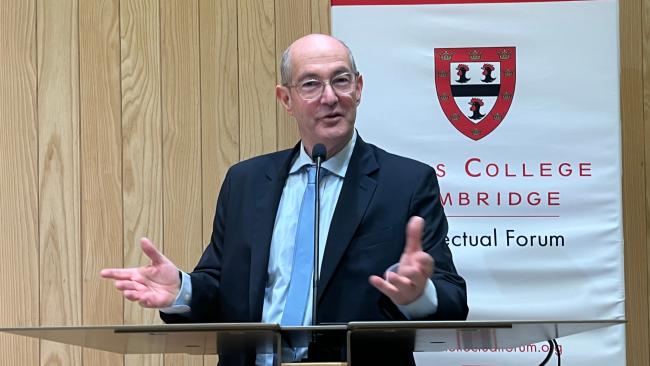
October 2017 - The origins of West Court
This month saw the official opening of West Court.
Acquired by the College from the Methodist Church in 2014, the oldest buildings in West Court started life as Wesley House, a training college for Methodist ministers.
Following an extensive refurbishment of the buildings, West Court provides numerous facilities for the College community including the Roost café bar, JCR, MCR, lecture theatre and further accommodation. However, the connection between the site of West Court and the College extend far beyond 2014.
The earliest records suggest that Jesus acquired the site, which extends to about an acre, and some existing buildings on Jesus Lane from Corpus in the 16th century. The properties once fronting Jesus Lane (now the site of the Rank building) were originally built as cottages although immediately prior to the development of the site by the Methodist Church were used as a mixture of housing and business premises, including a bicycle shop run by a Mr. Robinson.
The larger part of the site at the rear of the cottages was turned into stables by the College in the early 19th century as a place for Fellows to keep their horses, although soon after the stables were let out to some neighbouring livery stables. These plans of the site from 1857 and 1879 give an indication of how the space was used
The livery stables proved a profitable business through the 19th century, however, with the inevitable increase in use of bikes, trams, buses, trains and cars, the stables had become ‘practically derelict’ by 1914. At this time they were occupied by Hopkins and Co., with the advice from Carter Jonas to the College being to level the site with the intention of leasing it out or selling it on. With the outbreak of WWI it appears that there were thoughts to lease the site to the Cambridge University Officers Training Corps before it was sold to the Methodist Church.
This sale was completed on 19th June 1922 as shown here in the conveyance between Jesus College and the Trustees of the Methodist College Cambridge. It detailed the terms on which the land was sold in addition to a description of the site location and the purchase price. Other stipulations relating to the terms of the sale of the land are noted, including limits on the height of the buildings, how close they could be to the boundaries of the College and that no other buildings other than the theological college could be built.

As part of the terms of the University and Colleges Estates Acts of 1858 to 1898, the sale of the property on Jesus Lane had to receive approval from the Ministry of Agriculture and Fisheries. This notice from February 1922 shows that the Methodist Church paid £18,000 for the site.

The new Wesley House buildings were designed by Sir Aston Webb who is also known for his work on the V&A, the Royal College of Science in South Kensington (only part of which now survives), Admiralty Arch and the re-facing of Buckingham Palace in 1913. As this letter shows, the College reserved the right to approve any buildings that were constructed on the site, possibly with the thought that it may well buy back the site at a later date.

Of the documents relating to Wesley house in the College Archives, possibly the most significant is this covering letter from Sir Henry Holloway to Bernard Manning, the then Bursar of Jesus College dating to 5th December 1922. It is attached to an extract from the minutes of a meeting held by the 'Trustees of the Methodist College Cambridge' on 1st December 1922 at which it was decided that should the Methodist Church ever decide to sell the Wesley House site, then the College would be asked in the first instance if it would like to buy it back.
It is of course this agreement that in part enabled the repurchase of Wesley House from the Methodist Church by the College to allow the creation of West Court.








